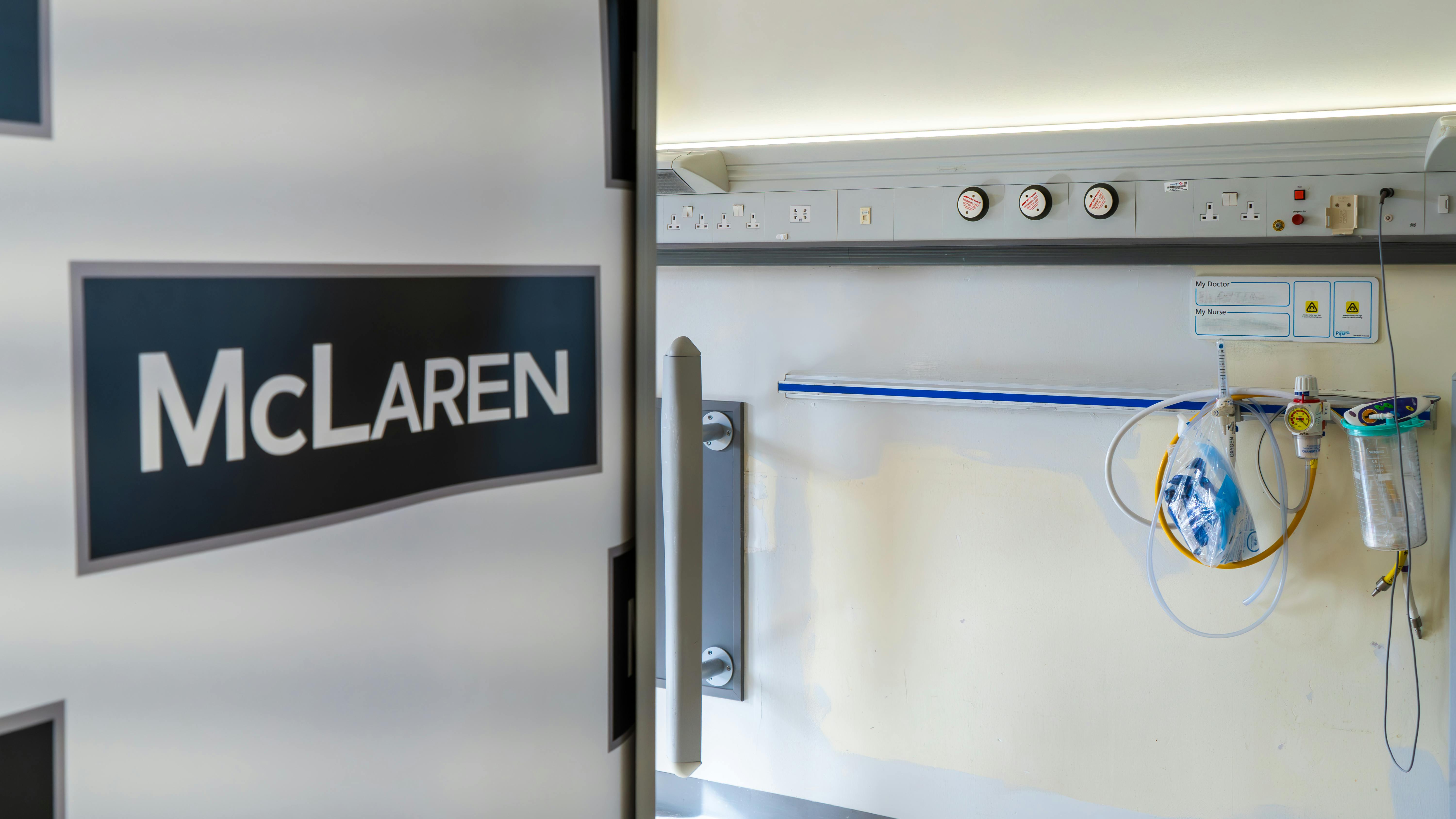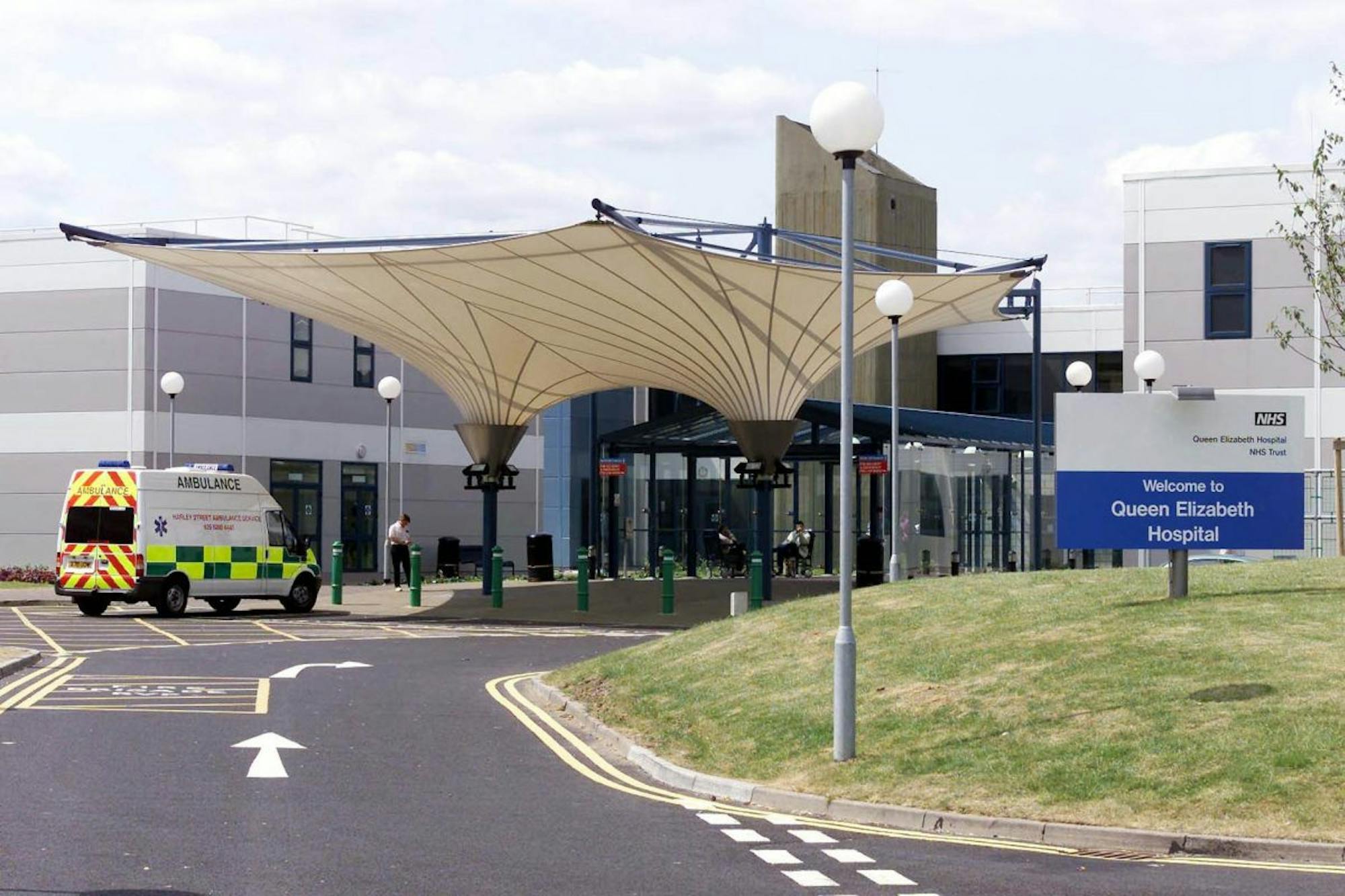McLaren Construction are delivering site-wide infrastructure works to improve the electrical infrastructure, oxygen supply and ventilation to live clinical areas at Queen Elizabeth Hospital in Woolwich.
The 482-bed hospital is managed on behalf of Lewisham and Greenwich NHS Trust. It was one of the first of over 50 English hospitals built under the Private Finance Initiative, opening in March 2001.
Infrastructure upgrades
The £30m capital investment brings improved estate resilience and patient care by delivering new primary high-voltage and low-voltage electricity distribution, back-up generators, a refurbished energy centre, a new vacuum insulated evaporator compound and associated structural and building works.
Ventilation improvements include refurbishment or replacement of the air handling units serving the operating theatres, pathology, delivery suite, special care baby unit and ward areas. Existing air handling units for one block of wards have cooling coils installed and a new chiller to eliminate summer overheating.

Over 60 existing sub-main cables, distributing power around all areas of the estate, were transferred from existing high-voltage and low-voltage supplies to a new energy centre and generator back up. Business as usual was maintained while the team dug a trench around the perimeter of the hospital with minimal disruption and provided temporary power supplies.
The extensive works require around 6km of armoured electrical cable including 1km of high voltage electrical cable, 1.3km of busbars, 9 new air handling units, 19 refurbished air handling units and three 1.5kVA generators.
A sensitive live environment
The hospital has remained in operation throughout the duration of the works. McLaren engaged with clinicians, the estates team, the facilities management provider and other stakeholders in the hospital to develop an 80-week programme to support the trust’s ‘business as usual’ policy and ensure minimal disruption.
Where work was done in live critical areas it was programmed in phases to maintain capacity of those the departments. The team worked on only two of the seven operating theatres at any given time and sufficient post-theatre recovery space was maintained by dividing the area in two with hygienic hoardings. On hospital wards the team tackled one bed bay at a time. Works on the delivery suites and special care baby unit were divided into 12 and six phases respectively.
The resulting programme of works avoided intrusive structural alterations impacting clinical delivery and allowed sufficient lead times to engage with departmental heads. Collaboration continued as works progressed so that the programme could flex in response to clinical pressures and changing circumstances.
Agreeing the programme with clinicians unused to construction drawings and schedules required a more graphic presentation and a walk through the site of future works to discuss the location of hoardings and the routes that McLaren’s team would use.
McLaren was unable to use its crane to lift loads over live areas of the hospital, requiring laborious ground-based procedures:
- To build new switch rooms in internal courtyards, machinery was driven down hospital corridors, temporarily reinforced from below.
- Six structural oil tanks and three generators had to be manoeuvred through a small opening into the new energy centre.
- The limited load-bearing capacity of the roof meant heavy air handling units were transported in parts and assembled in situ.
McLaren worked with subcontractor Dowds Group.
